I know y’all are sick of hearing that “content is king.”
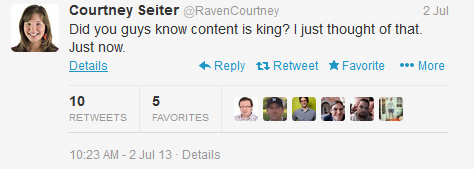
“Content is king” is one of the major web marketing clichés of our time, right up there with “SEO is dead.”
Following close behind, I think, is the recommendation to “create great content.” Want tons of Google traffic, hot leads, record sales? Don’t worry about SEO, conversion rate optimization, any of that, just create great content!
But what does that really mean? What makes content great, and what exactly is “content” anyway?
Here’s my definition: “Content” is really just information – really, simple as that! When you create content, you’re putting information on your site. Some of it is intended to teach, some of it is intended to persuade, some of it is intended to entertain. And great content is information that succeeds at teaching, persuading or entertaining your visitors while also helping you meet your business goals.
To make this all a little more concrete, here are eight traits – all words that end in “able” – you should strive to embody with your content. If your content meets all or even most of these standards, you’re off to a great start!
1. Great Content Is Findable
Your beautifully written content is utterly worthless if nobody knows it exists. (Unless you’re Emily Dickinson – are you hoping to be discovered after you’re dead?)

Emily D: hardly the poster child for SEO
So those gurus I quoted earlier who tell you to forget about SEO and just focus on greatness? They’re lying. Good SEO is part of what will make your content great.
Really, your content should be findable in at least two ways:
- From inside your site – If someone is already surfing around your site, they should be able to find your latest and greatest.
- From outside your site – That almost always means via a search engine. People who don’t even know you or your website exist should be able to find your content through a Google search.
The best way to achieve search findability is to align your content with a highly relevant keyword. Then optimize your content for that keyword. For more help with that process, check out: How to Rank for a Keyword in 10 Steps.
As for those people who are already on your site, here are some tips for making your content more discoverable:
Optimize your information architecture
Individual pieces of content are easier to find when they’re sorted within a well organized site. (As a bonus, Google tends to favor well organized sites too.) Have a site map that gives visitors an overview of your organization. Use breadcrumbs and/or a left navigation menu to show visitors where they are within the organization of your site. Here’s Amazon’s left nav for example:
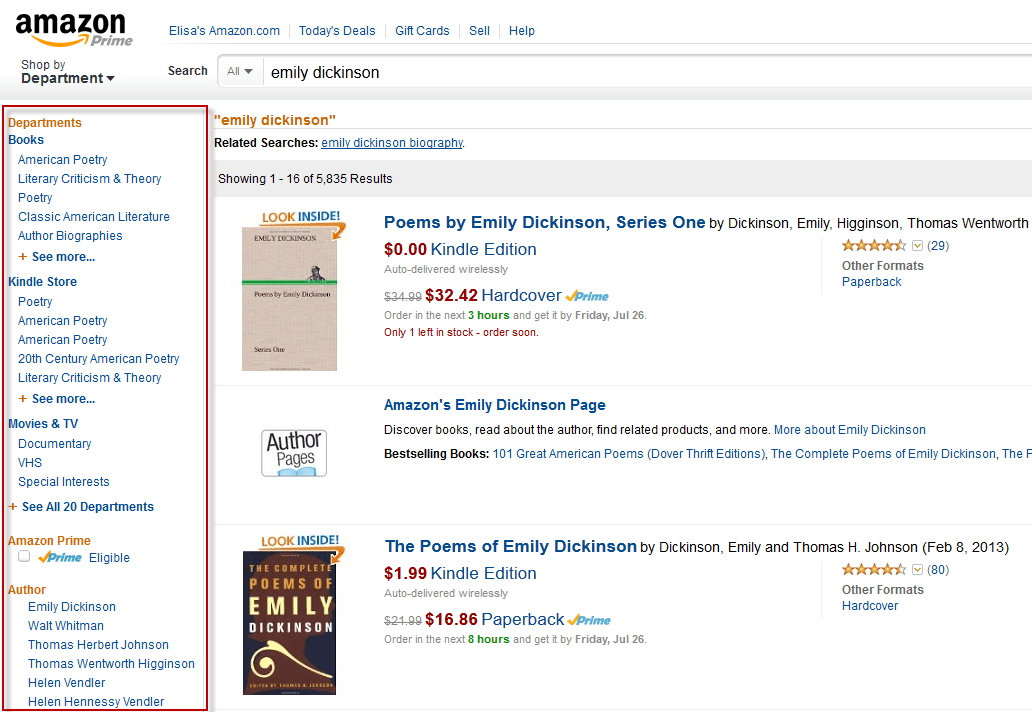
These design elements increase visibility of your other, related content pieces and make it easy for visitors to move up a level or down a level in the content hierarchy.
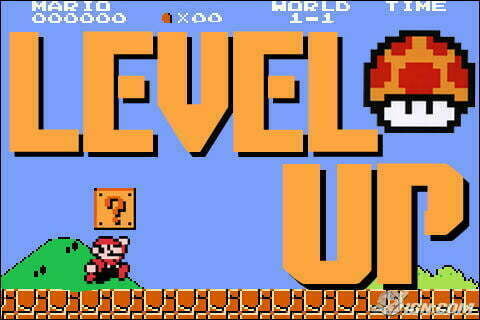
Level up, Mario!
Include a search function on your site
This is a no-brainer – visitors might want to see if you’ve covered a certain topic, or want to relocate something on your site that they’ve read in the past. A search function makes it easy.
(You may have noticed the glaring lack of a search box on the WordStream site. I’m not happy about it either.)
Have a “best of” sidebar
Show off your most popular content so it stays popular. A great way to do this is with a little sidebar module that shows your blog readers, for example, your top blog posts, like this one on the Moz blog:
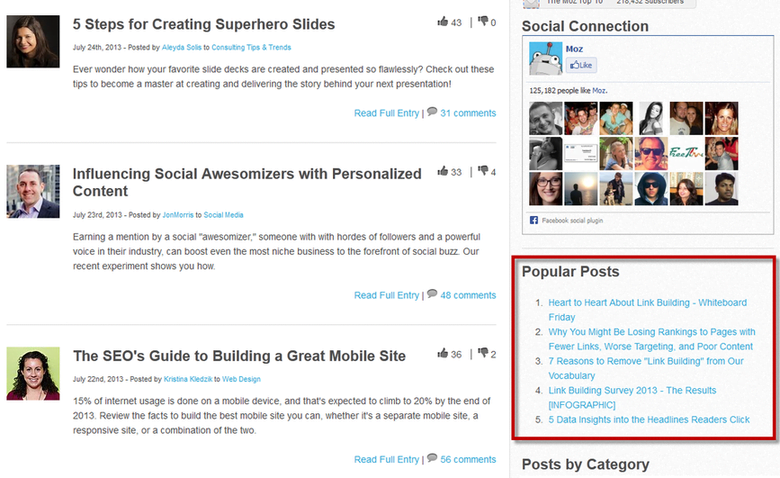
This makes your site more “sticky,” meaning people are more likely to stick around and read more.
Promote new content
Content promotion is a huge part of content success. When you create new content, promote it on your home page or other highly trafficked pages. Consider sending out an email blast to your list. The more people who know your content is out there, the more people are likely to read it, love it, share it, act on it.
2. Great Content Is Shareable
This is another two-parter—shareable content meets two criteria:
- People want to share it – When people find truly great content, they want to sing it from the rooftops, or at least put it on Facebook.
- It’s easy to share – The first part is making something that people want to share, the second part is making it super easy for them to do that.
The folks at Upworthy are experts in getting people to share their content. A while back I gleaned some tips for maximizing your content’s viral potential based on a great slidedeck from Upworthy. Read the whole thing, but here are the basics of shareable content:
- Start with something truly awesome – Would YOU want to share it? If you’re embarrassed to tell your coworkers what you just posted on the blog, start over, it’s not good enough.
- Spend more time on “framing” – That means the headline, the “share text,” the lead image, etc. – the stuff that shows up on Facebook. Think in terms of funnels – the more people that see your headline and feel intrigued, the more of them are going to click and read, maximizing the potential of them sharing it with their networks, and so on.
- Use handy-dandy social sharing tools – Hovering share buttons, “Click to Tweet” tweetables, a big fat pop-up that says “Share this, homie!” Do what you have to do, within reason, to encourage your readers to share your stuff.
I’m way more likely to tweet out an article if there’s a button that makes it stupid-simple for me.
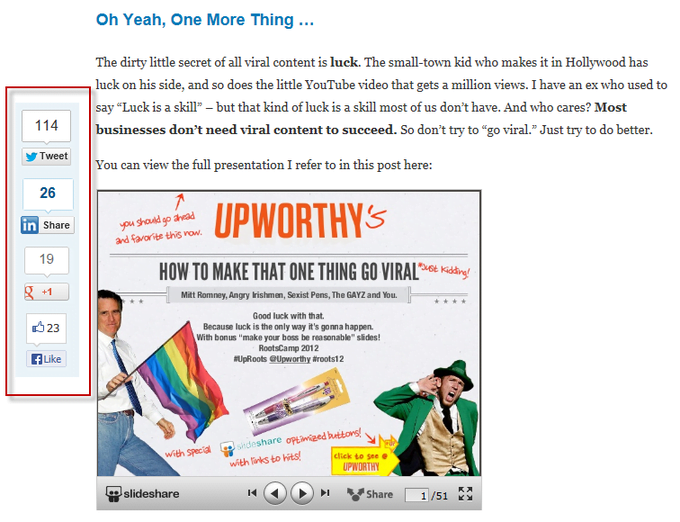
Scroll all you want, that sucker’s not going anywhere
If I have to actually copy and paste both the headline and link into a tweet compose box, ugh – your content has to be 3-5 times more awesome for that.
3. Great Content Is Usable
“Usability” is key in design, whether you’re talking about an online tool or a fork. And great content needs to be usable too – that is to say, it should be easy for people to consume your information.
If you’re starting with a well-designed, highly usable website in the first place, any content you layer on top is going to be more usable too. But you also need to think about it at the level of each piece of content. This is especially true if:
- Your content is some kind of interactive tool – Tools are content! Apps are content! But people won’t use them if they’re not easy to use, so do user testing and take feedback seriously. Make sure they work across multiple browsers, environments, etc.
- There’s some kind of action you want people to take – That action might be as simple as sharing the content (see above). Or you might want them to provide an email address, or click a button to donate some money, or make a purchase. This is where conversion rate optimization comes in.
Here’s an example of the tool as content – the online stopwatch.

I was about to complain that the tool could be bigger when I noticed that you can change the size:
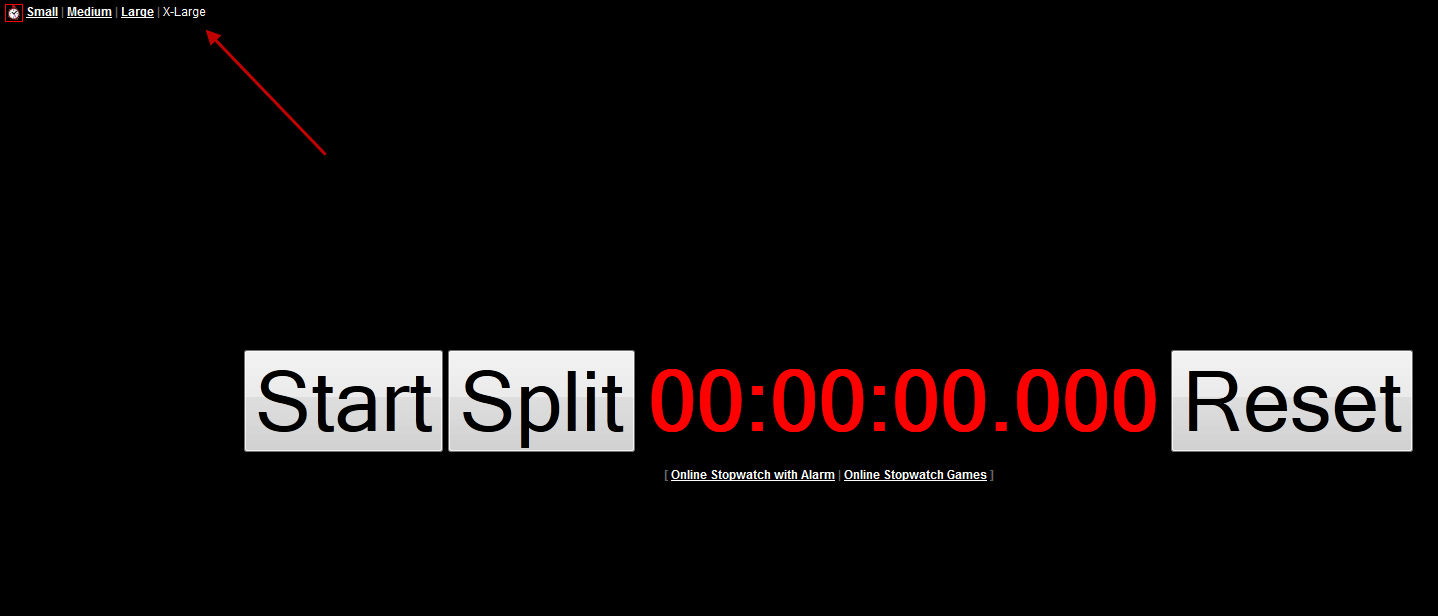
Usability hack! That’s more like it.
Other stuff to worry about from a usability perspective – how does your site work on mobile devices? Do you have a loading speed problem?
What if we’re talking about a regular old article? How do you make that usable? That brings us to our next able word.
4. Great Content Is Readable
Readability is essentially usability for text. This idea encompasses both good design and good writing.
From a design perspective, readable content is easy on the eyes. So think about readability factors like:
- Font size (We recently increased our blog’s font size after some readers complained that our “great content” was too hard to read)
- Text and background color (Think red on black would look cool? Think again)
- Column width (Too wide and readers lose their place when they move back to the left margin)
- Leading (Leading is the vertical space between lines – not too tight)
As far as writing goes, know that writing for the web is a specialized skill. My list of 50 things every content marketer should know includes plenty of tips for making your content more readable, but here are a few to get you started:
- Lists – It’s a cliché but it’s true, people love lists – it’s because they’re easy to process. Consider lists both as a structure for your whole article (this one is a list of 8) as well as a way to increase readability within your article – notice all the bullet lists on this page?
- Scannable chunks – Another able word! Break your text up into as many chunks as possible, so it’s easier for web readers to scan. That means bullet lists, headings and subheadings, use of bold text and pop-out quotes, etc. Give the eyes something to latch onto.
- Clarity and concision – These two C words are a copywriter’s best friends. Aim for concision at the level of the sentence – there is nothing wrong with long-form content if every sentence conveys valuable information. Just don’t ramble. To increase your clarity levels, never write anything you’d feel weird saying out loud. Write like you talk (but with better grammar).
5. Great Content Is Memorable
Great content doesn’t just amuse you for 2 minutes and then disappear from your mind. It should stick with you, making you more likely to revisit it and recommend it to friends or colleagues. You can make your content more memorable by making sure it answers the “So what?” question, or by creating contrarian content that doesn’t just parrot what everyone else is already saying.
I’d like to illustrate this one by way of example. Here are a few pieces of great content that I’ve remembered because they were so striking, unusual, or just excellently executed that I couldn’t get them out of my mind. (Note that my picks are influenced by my being a woman; YMMV.)
25 Ways to Wear a Scarf
I think I first saw this video when Joanna Lord tweeted it. (Videos are content!) I immediately emailed it to my mom, and that weekend, my friend Katie and I watched it again and tried to re-create some of these styles (not always with success). It’s just awesome – she’s so cute and the way it’s edited (the split screens, the sped up and slowed down parts) keeps you watching:
You can create your own video content with helpful how-to videos or explainer videos.
10 Charts About Sex
I picked a random example from OkTrends – OkCupid’s blog – but seriously, every post they ever published was both awesome and memorable. I say published, in the past tense, wiping away a tear, because they haven’t put up a new post since this one in April 2011. But I’m sure they’re still getting plenty of traffic for these content marketing gems, full of charming, witty, sexy data analysis (yes, data can be sexy!) on OkCupid’s user base. Like this graph:
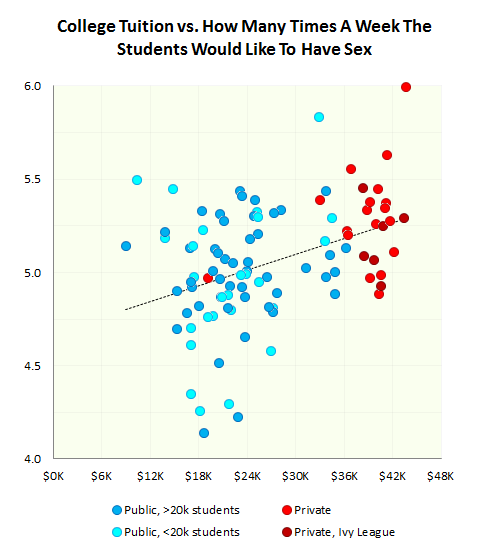
As they put it, “the more your parents are paying for your education, the more horny you are.” (Maybe because those Ivy Leaguers don’t have to work a job and study for class at the same time, sort of frees up the imagination … go figure.)
In Which We Teach You How to Be a Woman in Any Boy’s Club
I love this article by Molly Lambert from 2011, a manifesto/rulebook for women in male-dominated environments (ahem! SEO). Basically, Molly Lambert said what needed to be said. It’s shareable – I have shared it many times. It’s readable – see how it’s broken up into scannable sections with subheads? With pretty yet interesting (relevant, but not obvious) pictures? It’s memorable, or it wouldn’t be in this list – memorable because it’s unique (I’ve never seen another article quite like this) and beautifully executed (it’s fierce and fearless). It’s also quotable (see next section!) – here are some memorable quotes:
- Megan Fox Syndrome, aka Wendy from Peter Pan. It is the delusion that you can become an official part of the boys’ club if you are its strictest enforcer, its most useful prole.
- Some conversations are uncomfortable but also necessary. They are so uncomfortable because they are so necessary.
- The only men who are turned off by ambition and success are men that are insecure about their own talents and success or lack thereof.
- Whatever you look like, it will be used against you.
Etc. Etc.
6. Great Content Is Quotable
One element of great web writing is the soundbite. Some writers are particularly great at this – almost every sentence in an article is full of biting wit and under 140 characters. (That can actually get pretty annoying.) The thing about quotable content is that it’s both more memorable and more sharable. See how these able words are all working together now?
Here are some tips for writing more quotable content:
- Read more – The best way to become a better writer is to read good writing. Learn by absorption. Copy people you admire until you “find your own voice.” (Most likely, you won’t be able to copy them exactly anyway; you’re not an impressionist.) And if you write for the web, don’t just read books and print mags – read blogs and websites.
- Work on concision – Allow me to quote myself, because I said this in the readability section too. Clarity and concision are your buddies! If none of the sentences in your content are tweet-size, put down the Henry James novel and use the period key more often.
- Be funny – People like to quote the laugh lines. If you’re funny in real life, you can be funny in writing. If you’re not funny in real life, try something else – be wise. Be brilliant. Be poignant.
- Tell readers what to quote – If you know you’ve come up with a good line, put it in bold text or pop it out. Make sure people see it! Don’t bury your treasure.
- Avoid cliches – You want your readers to be quoting you, not the same familiar marketing cliches we’ve all heard a billion times before.
7. Great Content Is Actionable
As a business, one of the reasons you’re creating content is to position yourself as an authority. If you can step up and help people when they need your help, they’ll thank you for your expertise, and they’ll trust you more in the future and be more likely to return to your site. (And maybe buy your stuff!)
If we’re talking about informational content (the kind you find using informational search queries), the most helpful content is actionable content. That means people read it and think, “Hey! I could do that! I’m going to do it right now, in fact.”

Actionable content gives people something to act on. Here are a couple of examples:
- Using Symbols to Get an 89% Lift in Conversions – It’s one thing to say “Write better ads, they get higher CTR.” It’s another to make a very specific recommendation that people can actually do without having to think too hard. This post shares some data on the power of symbols (like a registered trademark symbol) when it comes to lifting click-through rate. Read article, add symbols, get higher CTR, boom boom boom.
- 5 Landing Page Headline Formulas You Can Test Today – Again, just telling people to write better headlines for their landing pages isn’t actionable; it’s vague. What is “better”? How do you do that? This post from Unbounce offers actual formulas with lots of examples to get you rolling. And notice how the title of the post sells how actionable it is!
8. Great Content Is Reportable
Remember, way back about 2,500 words ago, when I said that great content helps you meet your business goals? Well, you can’t know if content is doing that unless you make sure it’s reportable.
Every time you create a piece of content, have a goal in mind. Most of the time you’ll have multiple, overlapping goals. Bake reportability into your content so you’ll be able to tell if it’s meeting those goals, which might include:
- Traffic – The absolute easiest metric to track. Usually not super valuable in and of itself – it’s what you do with that traffic that matters.
- Engagement – We look at a number of engagement metrics including social shares (that clicky sidebar tells us how many tweets, likes, etc. we have), number of comments, time on page (moving to more long-form content increased our average time on site!), and bounce rate. We want our visitors to really dig into our stuff, not just click, scan, and click away.
- Conversions – Conversion tracking is trickier than just tracking traffic, but it’s worth the trouble so you know what kind of content helps you drive leads and sales, not just page views. (For more help here, check out Glenn Gabe’s beginner’s guide to conversion goals in Google Analytics.)
I urge you to make your content reportable for two reasons:
- If your content isn’t reportable, you won’t know if it’s great – And the whole reason you’re here is to learn how to make great content! After a while you’ll know greatness when you see it.
- Great content begets more great content –This is the part where you learn from your greatest hits and your crappiest non-hits. Reporting on your content makes it easier to repeat your successes and avoid future failures.
Those are my eight traits that make great content. I hope you found this guide (since it’s so findable) to be readable, memorable, actionable, quotable … and if so, won’t you share it, pretty please?







